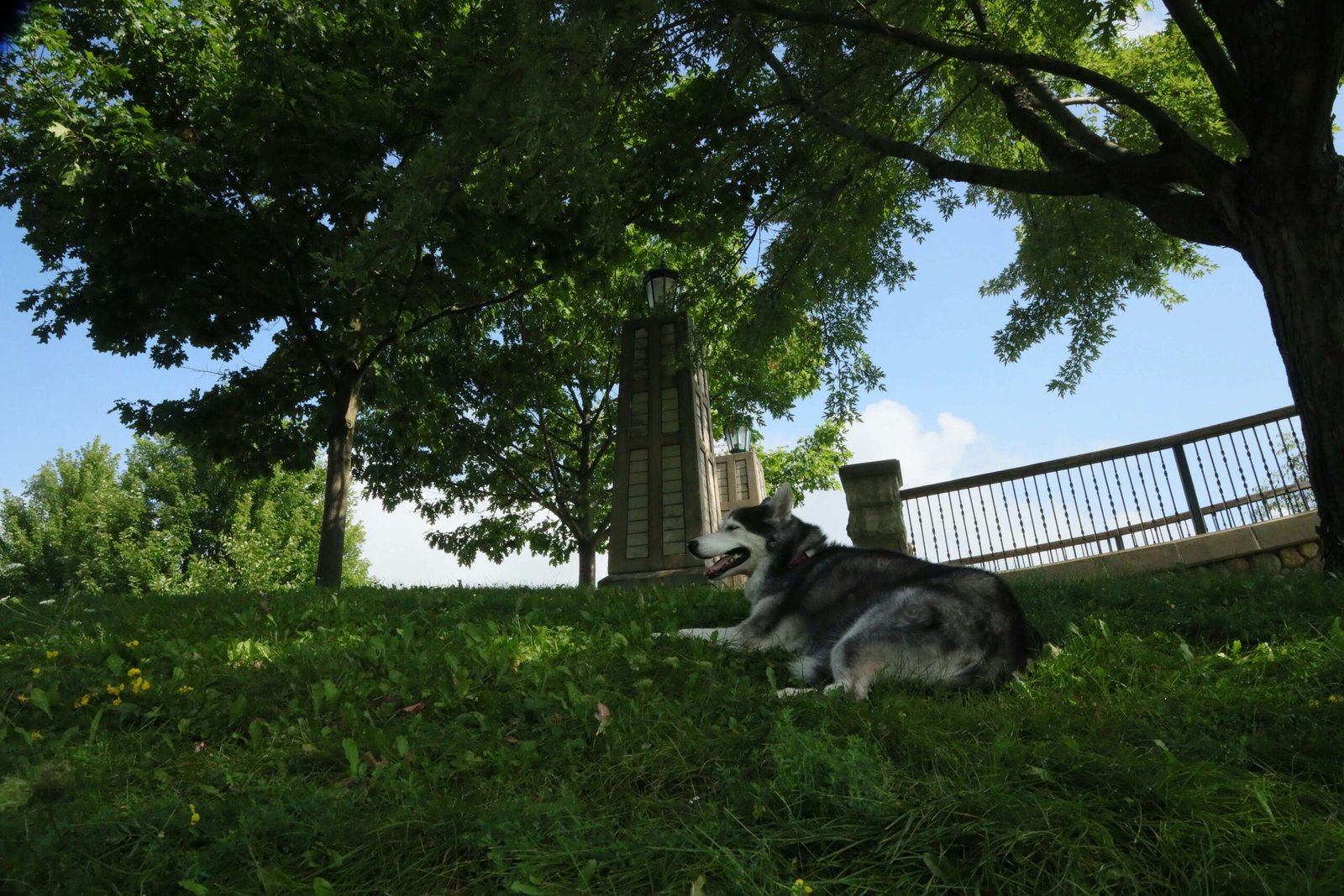How to Measure Your Dogs Chest: A Complete Guide for Pet Owners
Whether you’re shopping for a new harness, sweater, or simply monitoring your dog’s health, knowing how to measure your dog’s chest is an essential skill every pet owner should have. The chest measurement is one of the most critical dimensions when it comes to ensuring a perfect fit for clothing, accessories, or even medical equipment like braces. But beyond practical applications, keeping track of your dog’s chest size can also help you notice changes in their weight or overall well-being over time.
In this blog post, we’ll guide you through everything you need to know about measuring your dog’s chest accurately and confidently. From step-by-step instructions to helpful tips, you’ll be equipped to take precise measurements while making the process stress-free for both you and your furry friend. Let’s dive in!
Why Measuring Your Dog’s Chest Matters
Understanding why chest measurements are important will not only improve your ability to care for your dog but also ensure their comfort and safety. Here are some key reasons why taking accurate chest measurements matters:
Proper Fit for Harnesses and Collars:
Ill-fitting gear can cause discomfort or even injury. Accurate chest measurements ensure that your dog’s harness or collar fits snugly without being too tight.Health Monitoring:
Changes in your dog’s chest size could indicate weight gain, loss, or other underlying health issues. Regular measurements help you stay proactive about their well-being.Custom Clothing and Accessories:
If you’re purchasing custom-made outfits or ordering specialty items, having precise measurements ensures they fit perfectly.Preventing Escapes:
A poorly fitted harness may lead to accidental escapes during walks. Proper chest measurements reduce this risk significantly.Veterinary Needs:
Some medical devices, such as braces or wraps, require exact measurements for proper functionality.
By understanding these benefits, you can see just how crucial it is to get the chest measurement right. With this knowledge, you’ll be ready to move on to the next steps.
Tools You’ll Need to Measure Your Dog’s Chest
Before you begin measuring, it’s important to gather the right tools to make the process smooth and efficient. Thankfully, all you need are a few simple items that are likely already in your home. Below is a list of essentials along with brief explanations of their purpose:
Soft Tape Measure:
This flexible tool bends easily around your dog’s body, making it ideal for taking accurate measurements.Pen and Paper:
Keep track of your measurements by writing them down immediately after recording them.Treats or Rewards:
Rewarding your dog during the process helps keep them calm and cooperative.A Helper (Optional):
If your dog tends to squirm, having someone assist can make the task easier and quicker.Patience and Calm Energy:
Dogs pick up on their owner’s emotions, so staying relaxed and patient is key to success.
With these tools in hand, you’re now prepared to measure your dog’s chest accurately. Remember, preparation is half the battle!
Check this guide 👉Top 5 Escape Proof Dog Harnesses for Ultimate Safety!
Check this guide 👉Top 5 Essential Dog Clothes for Ultimate Comfort & Style!

Common Mistakes When Measuring | Tips for Success |
|---|---|
Forgetting to measure at the widest part | Always locate the broadest area of the chest before starting. |
Pulling the tape too tight | Ensure the tape is snug but not constricting. |
Not rewarding your dog | Use treats to create positive associations with the process. |
Skipping double-checks | Take multiple measurements to confirm accuracy. |
Ignoring seasonal changes in size | Re-measure periodically, especially if your dog gains or loses weight. |
Step-by-Step Instructions for Measuring Your Dog’s Chest
Now that you understand why chest measurements matter and have gathered your tools, let’s walk through the actual process. Follow these straightforward steps to ensure accuracy:
Step 1: Locate the Widest Part of the Chest
Feel along your dog’s ribcage to find the broadest section, typically just behind the front legs. This is where you’ll take the measurement.Step 2: Wrap the Tape Around the Chest
Place the soft tape measure around the identified area. Make sure it lies flat against your dog’s fur without twisting.Step 3: Check for Snugness
The tape should be snug enough to stay in place but loose enough to slide a finger underneath comfortably.Step 4: Record the Measurement
Note the number where the tape overlaps. Write it down immediately to avoid forgetting.Step 5: Repeat for Accuracy
Take the measurement two more times to ensure consistency. If the numbers vary slightly, calculate the average.
By following these steps carefully, you’ll achieve reliable results every time. Practice makes perfect!
Additional Tips for a Stress-Free Experience
Measuring your dog’s chest doesn’t have to feel stressful—for you or your pup! These additional tips will help make the experience enjoyable and seamless:
Choose the Right Time:
Pick a moment when your dog is calm and relaxed, such as after a meal or play session.Create a Positive Association:
Pair the activity with treats or praise to build trust and cooperation.Be Mindful of Sensitive Areas:
Avoid pressing too hard on sensitive spots like the abdomen or spine.Practice Regularly:
Frequent practice helps desensitize your dog to the process, making future measurements smoother.Stay Consistent:
Always measure in the same way to maintain uniformity across readings.
With these strategies in mind, you’ll create a routine that works seamlessly for both you and your dog. Happy measuring!
Additional Benefits of Regular Chest Measurements
Taking regular chest measurements isn’t just about fitting gear or monitoring weight—it offers a variety of lesser-known advantages that can enhance your dog’s overall well-being. Here are some unexpected benefits:
Early Detection of Health Issues:
Changes in chest size could signal conditions like bloating, fluid retention, or muscle loss before other symptoms appear.Improved Bonding Opportunities:
The act of measuring provides a chance to connect with your dog while reinforcing trust and affection.Tailored Exercise Plans:
By tracking changes in chest size over time, you can adjust exercise routines to suit your dog’s evolving needs.Preparation for Competitions or Events:
If your dog participates in shows or competitions, accurate measurements help ensure proper attire and equipment fit.Peace of Mind for Owners:
Knowing your dog’s exact dimensions gives you confidence when shopping online or working with professionals.
These additional perks highlight how something as simple as measuring your dog’s chest can have far-reaching benefits beyond its primary purpose.
Signs Your Dog May Need a New Measurement
Dogs’ bodies change over time due to factors like age, diet, activity level, and health. Recognizing the signs that indicate it’s time to remeasure their chest can save you from ill-fitting gear or missed health cues. Look out for these indicators:
Weight Fluctuations:
Noticeable weight gain or loss often affects the chest area first, requiring updated measurements.Outgrowing Harnesses or Clothes:
If your dog seems uncomfortable or restricted in their current gear, it might be too small.Seasonal Changes in Coat Thickness:
Winter coats can add bulk, while summer shedding reduces it—both scenarios may alter fitment.Behavioral Cues During Walks:
Pulling, scratching at harnesses, or resistance during walks could mean improper sizing.Post-Illness Recovery:
After recovering from an illness, dogs may experience physical changes that warrant new measurements.
Paying attention to these signs ensures your dog remains comfortable and safe throughout their life stages.
Common Challenges and How to Overcome Them
Even experienced pet owners encounter hurdles when measuring their dog’s chest. Understanding these challenges and learning how to address them will make the process smoother and more efficient. Here’s what to watch for:
Uncooperative Dogs:
Some dogs dislike being handled or measured. Start slow and reward heavily to build tolerance.Difficulty Locating the Widest Point:
For dogs with unique body shapes, finding the widest part can be tricky. Use visual markers like the shoulder blades or elbows as guides.Inconsistent Readings:
Slight variations between measurements are normal. Take multiple readings to establish an average.Thick Fur Interference:
Dense fur can obscure the tape measure. Gently part the fur to ensure direct contact with the skin.Limited Mobility in Senior Dogs:
Older dogs may struggle to stand still for long periods. Break the process into shorter sessions if needed.
With patience and practice, these challenges become manageable, allowing you to focus on the joy of caring for your furry friend.
Frequently Asked Questions About Measuring Your Dog’s Chest
Can I use a regular ruler instead of a tape measure?
It’s best to use a soft tape measure since it conforms to your dog’s shape. A rigid ruler won’t provide accurate results.
What if my dog moves around too much?
Try distracting them with treats or toys. Having a helper can also stabilize your dog while you focus on the measurement.
How often should I measure my dog’s chest?
For growing puppies, measure every few months. For adult dogs, once or twice a year is sufficient unless there are noticeable changes in weight.
My dog has thick fur—does that affect the measurement?
Yes, dense fur can add bulk. Press the tape gently against the skin to account for this.
Is it okay to guess the measurement based on breed standards?
Breed averages can give you a rough idea, but individual dogs vary greatly. Always measure directly for precision.
Final Thoughts: Mastering the Art of Measuring Your Dog’s Chest
Learning how to measure your dog’s chest is a valuable skill that enhances their comfort, safety, and overall quality of life. By following the steps outlined in this guide, you can confidently take accurate measurements while fostering a positive experience for your four-legged companion. Remember, patience and consistency are key. Whether you’re outfitting your dog for adventures or simply keeping tabs on their health, mastering this technique ensures they always look—and feel—their best.
Understanding Scabs in Dogs Ears: Best 7 Tips! Learn how to identify, treat, and prevent scabs in your dog’s ears for optimal ear health.
Is Cinnamon Bad for Dogs? Best 7 Health Tips! Discover safe ways to use cinnamon, risks to avoid, and expert advice to keep your dog healthy.
Can Dogs Get Pneumonia from Humans? Best 7 Tips! Learn how to protect your dog, understand transmission risks, and ensure their respiratory health.
Can Dog Urine Make You Sick? Best 7 Health Tips! Learn how to stay safe, prevent illness, and handle exposure to dog urine effectively.





